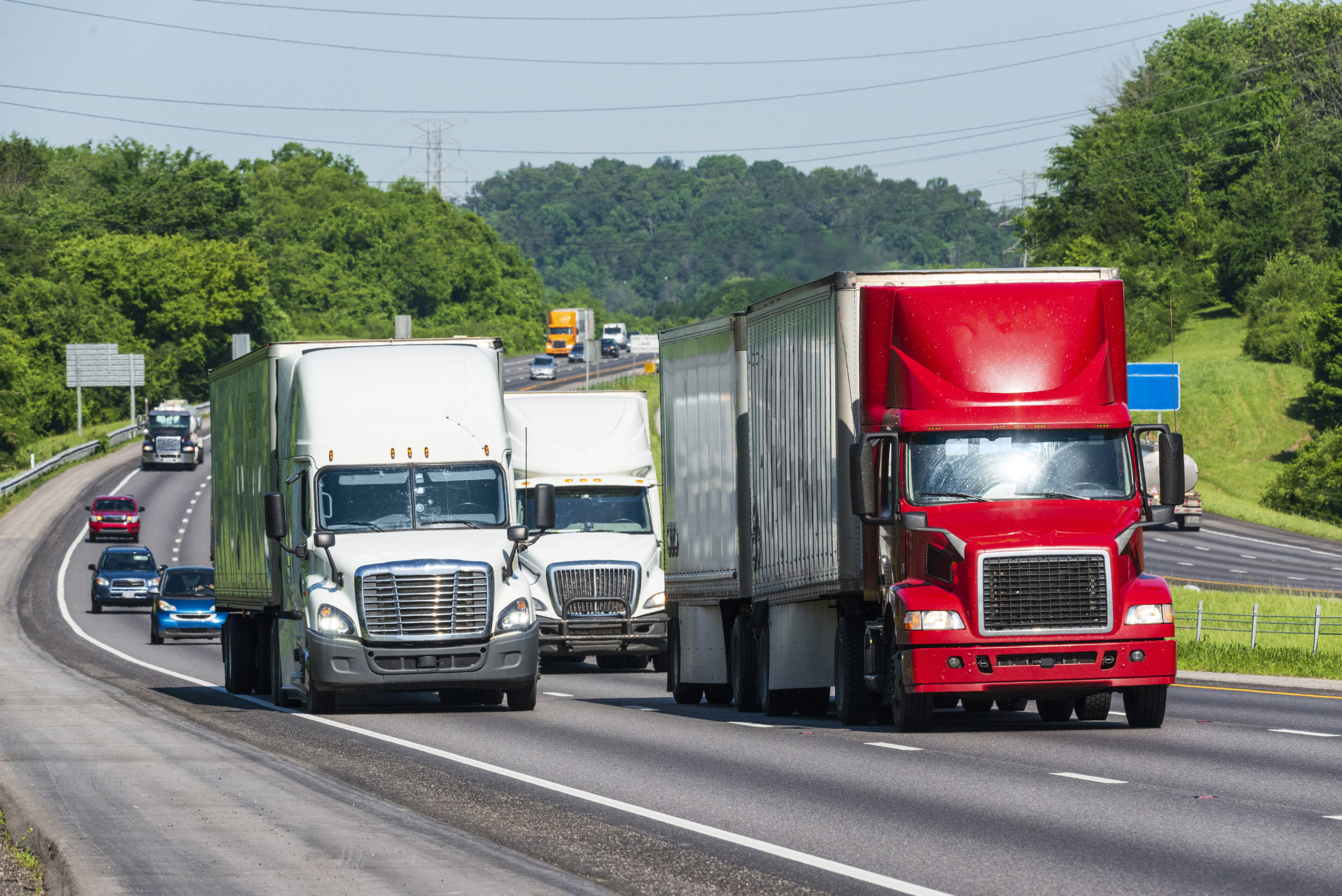A closer look at blind spot trucking accidents – will you be blamed?

We’ve seen this type of accident time and time again: a careless driver sneaks into a truck’s blind spot resulting in an unwanted collision. Blind spots or “no-zones” are a dangerous element for any driver, but especially semi-truck drivers, as the size and mass of their commercial vehicles are significantly different from others on the road. The blind spots experienced by truck drivers can be hard to understand unless you have been in their seats, and many times truckers are blamed for these types of accidents.
“No-Zones” include the blind spots along each side of the truck, space up to 20 feet in front of the cab, and the area up to 200 feet behind the trailer. Blind spots cause upwards of 400,000 trucking-related accidents across the United States every single year, with more than 150,000 of those accidents involving fatalities, according to the U.S. Department of Transportation.
As a truck driver, being involved in an accident can be a nightmare. In a case involving a blind spot crash, you may be going up against lawyers who specialize in Truck Crash Injury. It is important to be alert and safe while out on the road, however, here are some helpful tips if you do happen to find your self in a blind spot related accident.
How Do They Assess Who Is At Fault?
After the accident occurs, the police and insurance companies will assess the drivers involved. In some cases, a percentage of the blame will be distributed to each party. Often, initial blame can be put on truck drivers, however, further investigation can reveal that others were rightfully at fault.
If you are in a blind spot accident, your insurance company and attorneys will likely argue that the passenger vehicle is at fault for being in your truck’s blind spot. However, if there is proof that you did not check your mirrors and clear your blind spots before maneuvering their vehicle, you could be found at fault.
Depending on the accident, any of the following evidence could potentially be used to blame you:
- The truck’s camera
- Vehicle damage
- Physical evidence from the truck, other vehicles, and the accident scene
- Employee records
- Drug and alcohol screening results
- Truck driver logs
- Cargo records
- Truck maintenance logs
- Eyewitness reports
- Accident report
- Medical records
If you are found to be liable in any way, you may receive tickets as a repercussion of the accident. Depending on the circumstances of your accident, your employer or the other party involved could also decide to take the accident to court.
If taken to court, damages from a personal injury lawsuit generally compensate for the following:
Economic losses: Economic losses include medical bills, lost wages, and property damage.
Non-economic losses: These losses include physical pain and suffering, and mental anguish.
Some lawsuits also award punitive damages, which are used to penalize a defendant who acted with extreme recklessness.
What Happens To My Job?
Most trucking companies have procedures in place for when a crash occurs. You may be required to go through drug and alcohol testing following your accident, and a positive test result would more than likely mean the blame of the accident falls on you and your job will be terminated. Certain offenses will require you to give up your CDL license. These include: driving under the influence, fleeing the scene of an accident, or vehicular manslaughter. Your former employer could even bring charges against you if you were under the influence while driving.
If the test is clean, the next course of action will depend on the severity of the tickets you receive and the damage caused by the accident.
Being fully transparent and complying with drug testing and the police investigation process may help you with your employer.
How Do I Prevent Blind Spot Crashes?
Even though many blind spot accidents are due to passenger vehicle drivers, it is still important for truck drivers to be properly equipped to be as observant and cautious as possible. With the right equipment adjusted on your rig, you significantly decrease the likelihood of being involved in a blind spot crash.
Blind spot detection: Lights that illuminate on a driver’s side mirror when an object is detected in a blind spot, providing a warning for the driver.
Blind spot mirrors: These are small mirrors that easily attach to existing side mirrors, and create a larger view of the rear and side of the trailer. A wider range of view means it is less likely for another vehicle to sneak into a truck’s blind spot.
Front and rear-facing cameras: These cameras are hard-wired or use a Bluetooth connection to send ground-level images to the driver, especially helpful for when you are being unknowingly tailgated.
Lane assist and departure systems: These systems employ collision avoidance technology that alerts the driver if they drift out of the lane or engages the brakes and reduces speed when a collision is imminent. Warning signs: Some commercial drivers place warning signs on their rigs to remind drivers to stay out of their blind spots.
Advanced technology plays a big part in helping alert drivers of on-coming traffic in blind spots, but it is up to all drivers on the road to adhere to safety precautions in order to reduce blind spot related crashes.